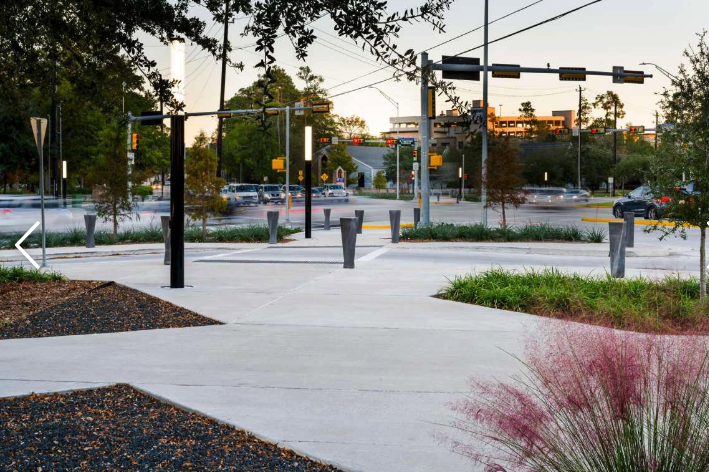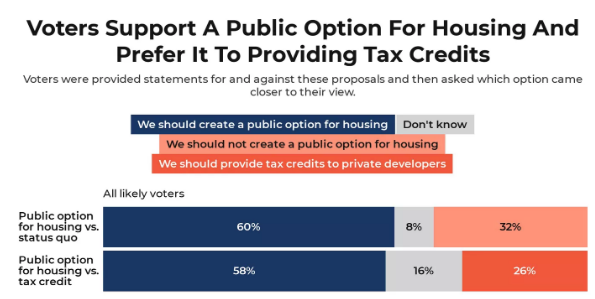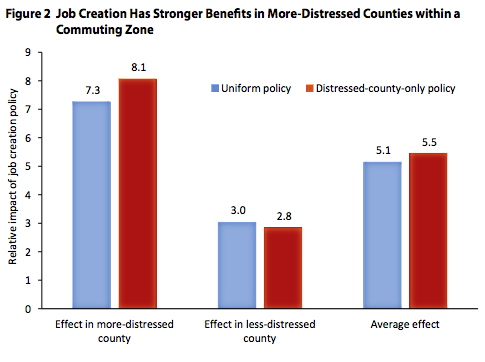What City Observatory this week
1. Why Portland’s Rose Quarter Freeway widening will increase greenhouse gas emissions. The Oregon Department of Transportation hashas falsely claimed its $800 million freeway widening project has no impact on greenhouse gas emissions. We examine traffic data produced by ODOT which shows that the widening will increase average daily traffic above today’s levels and produce tens of thousands of tons of additional greenhouse gases. The ODOT numbers are certainly an underestimate because they completely discount the certainty of induced demand: the scientifically demonstrated increase in vehicle travel that results from expanding freeway capacity in dense urban areas.
2. More performative pedestrian infrastructure. News reports hailed a new “protected” intersection in Houston, which prompted us to take a close look at the project. To be sure, as depicted in the artist’s conception, there are wider sidewalks, better lighting, nicer plantings, and even bollards (which we take to be the “protected” part). But if you step back, the project is just another failed attempt to remediate a fundamentally pedestrian hostile environment. The project actually widens and lengthens two “slip” lanes, which accelerates turning traffic and increases danger for crossing pedestrians.

Pedestrians must still cross two busy, multi-lane arterial streets that carry about 60,000 cars per day. And the local neighborhood has almost no walkable destinations nearby. As we’ve said, much of what gets labeled pedestrian infrastructure, is really to convenience car travelers, and does nothing to fix the fundamental problems of pedestrian hostile development patterns.
Must read
1. Will economics support post-Covid cities? Economist and Bloomberg columnist Noah Smith muses on whether economic forces will enable smart, flexible workers to “zoom it in” from remote locations instead of living and working in Superstar cities. He discounts some of the key agglomeration economies that the driven city growth in the past several decades, including the productivity of workers in dense urban offices, and the knowledge spillovers that come from proximity and competition. The most economic enduring factor attracting talented workers to cities, Smith thinks is urban amentiies:
For young people, this means bars, music venues, fun social events, lots of potential friends in their age group, and — probably the most important piece — opportunities to meet romantic partners. For older people this means a large variety of good restaurants and cultural events like musicals. For this reason, distributed workforces might just mean that knowledge workers live in different superstar cities.
Thus even if some workers are no longer bound to one large city, their most favored alternative may still be yet another superstar city. Smith relates that his migration has taken him from New York to San Francisco, and his next move, if there is one, is likely to be to Tokyo. When it comes to urban amenities—and the diverse crowds of smart, discerning and innovative customers that support them—there’s still no substitute for a great city.
2. American’s broadly favor public housing . . . just not in their back yard (or neighborhood). A new survey from Data for Progress shows remarkably strong public support for the idea of putting more federal tax dollars into building or subsidizing the construction of affordable housing.
That’s encouraging news given that today’s principal low income housing program, housing choice vouchers reaches only about one in five eligible households. The Biden Administration is proposing ramping up funding for vouchers, but whether we get more affordable housing, especially in desirable opportunity neighborhoods still hinges on whether local land use controls allow its economical construction; apartment bans and minimum lot sizes make affordable housing uneconomical in many US neighborhoods, and there’s little support, and predictable and vociferous opposition any time there’s a specific proposed project that would change this pattern.
3. Rights of Way. Houston Architect Christof Spieler has a thoughtful essay challenging the car-centric practices that dominate transportation policy in his (and other) cities. Texas metro areas, from Houston, to Dallas, to Austin, continue to be caught in an endless cycle of roadbuilding, projecting that traffic will increase in the future, building more roads to accomodate, and than find that traffic still increases further.
The widening of I-35 in Austin is an assertion that traffic will inevitably continue to increase, and that the only way to handle that is to add traffic lanes. This is a direct projection from the past, a continuation of a decades-long strategy used as Austin grew from 130,000 people in the 1950s to 978,000 today. I-35 was built in the 1960s along the old East Avenue, a six-lane road. The original highway had four lanes, two in each direction. . . . The distance the average resident of the Austin region drives increased for decades. TxDOT sees a freeway where traffic travels at 15 mph at rush hour and concludes that the only reasonable response is to add lanes. The question this workshop poses is what the best way is to add those four new lanes, and how to minimize the impacts those lanes will inevitably have on the city. However, those additional highways have been as much a cause of additional driving as they have been a result of it.
Ultimately, Spieler argues, the answers to the questions about what Texas cities (and others should do) don’t emerge from travel demand models that simply call for repeating past mistakes, they call for us to think about what kind of places we want to inhabit in the future.
New Knowledge
Bartik’s paper complements other recent urban economics research that challenges the geographically reductionist view of labor markets. Michael Lens and his co-authors found no correlation between proximity to jobs and earnings gains for low income households. Raj Chetty and his colleagues found little evidence of proximity of nearby jobs and lifetime earnings.
Major policy initiatives, like Opportunity Zones, have a kind of “propinquity” model of opportunity: the notion that having jobs nearby, ideally in the same neighborhood, is the key to helping people move out of poverty. These studies cast serious doubt on this simplistic notion.
Timothy J. Bartik, “How Long-Run Effects of Local Demand Shocks on Employment Rates Vary with Local Labor Market Distress,” W.E. Upjohn Institute for Employment Research, Upjohn Institute working paper ; 21-339, January 21, 2021, DOI: 10.17848/wp21-339
In the News
Willamette Week quotes City Observatory’s Joe Cortright on Portland’s proposed carbon tax for a handful of large polluters—one that unfortunately exempts the biggest sources of greenhouse gases.




